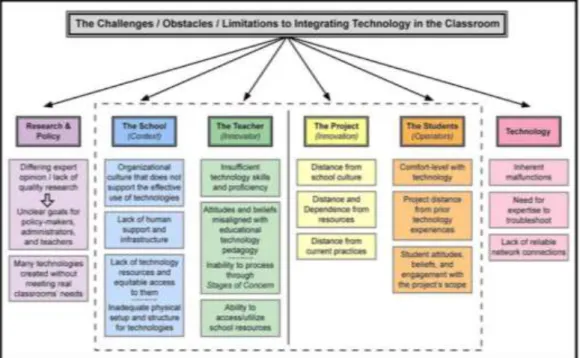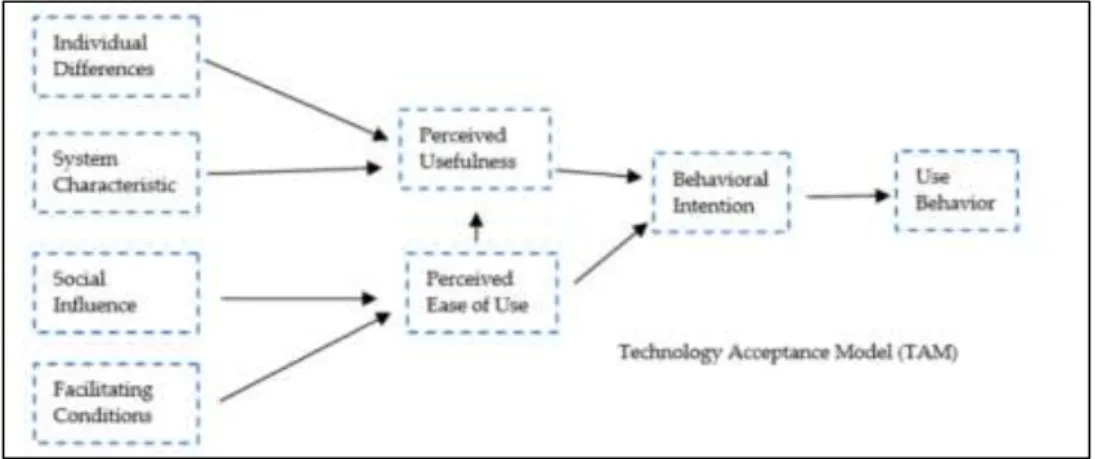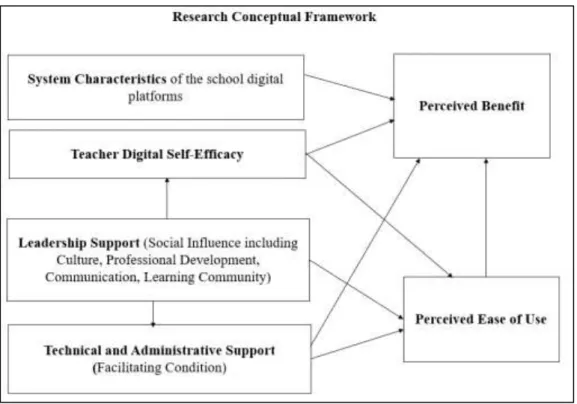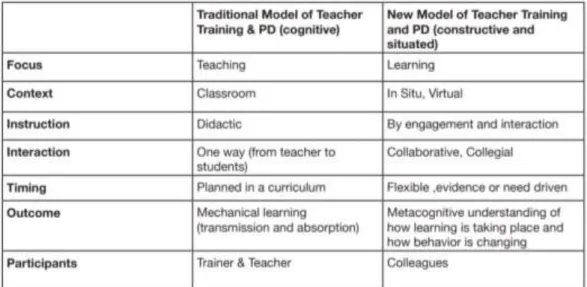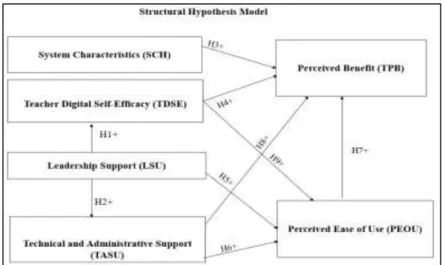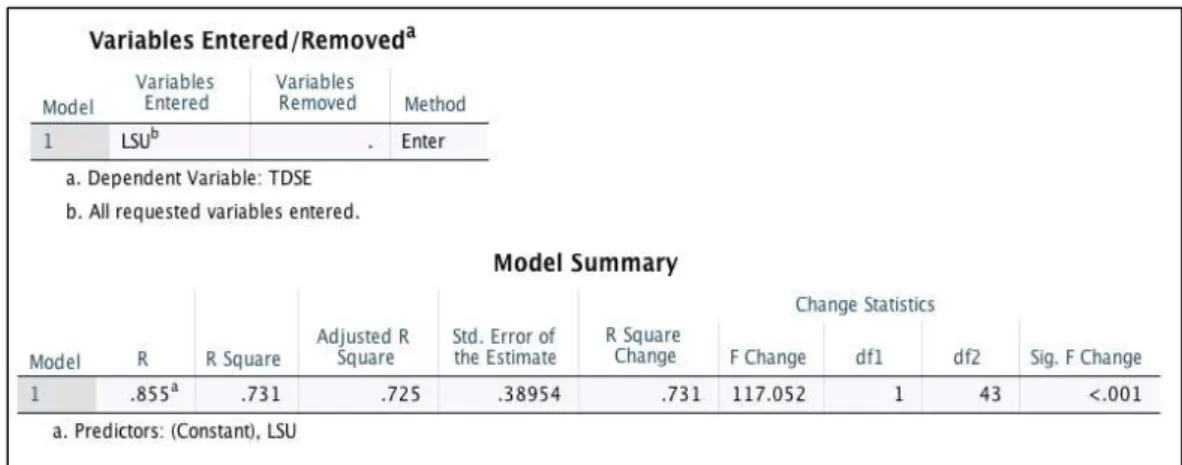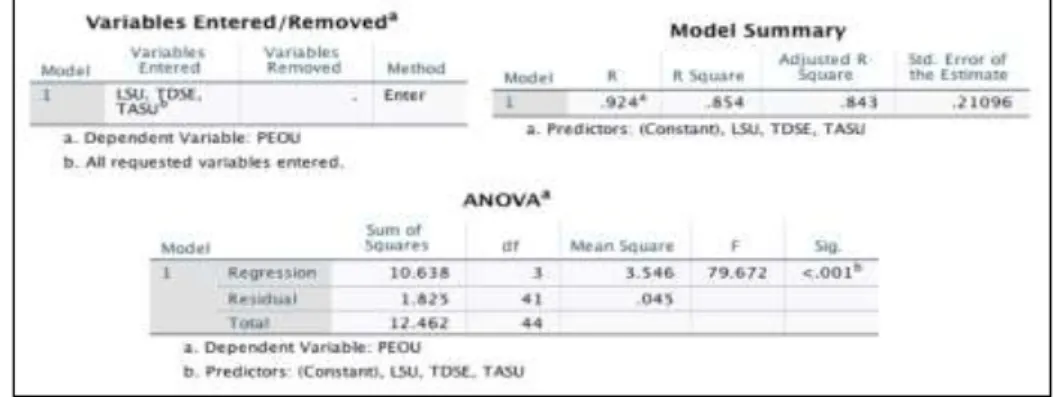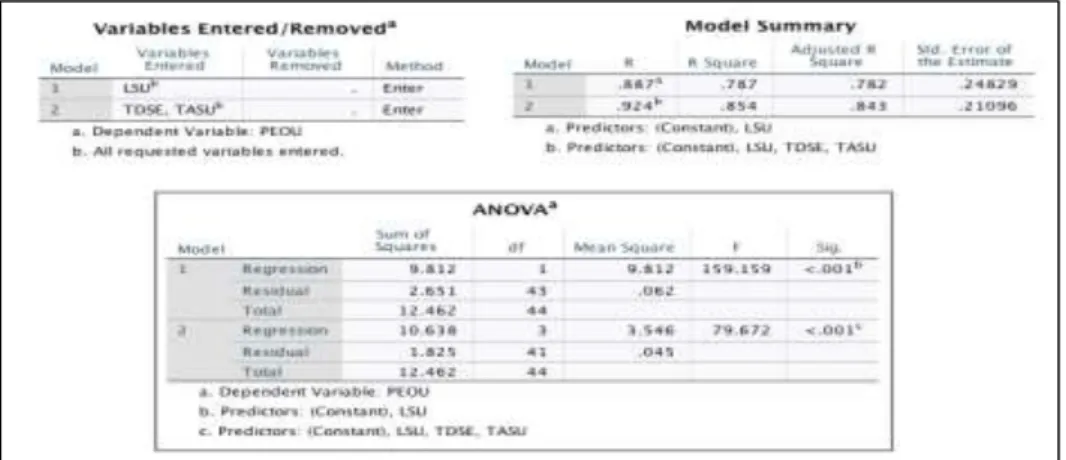The author whose copyright is declared on the title page of the work has granted the British University in Dubai the right to lend his/her research work to users of its library and to make partial or single copies for educational and research use. The author has also granted permission to the University to keep or make a digital copy for similar use and for the purpose of digitally preserving the work.
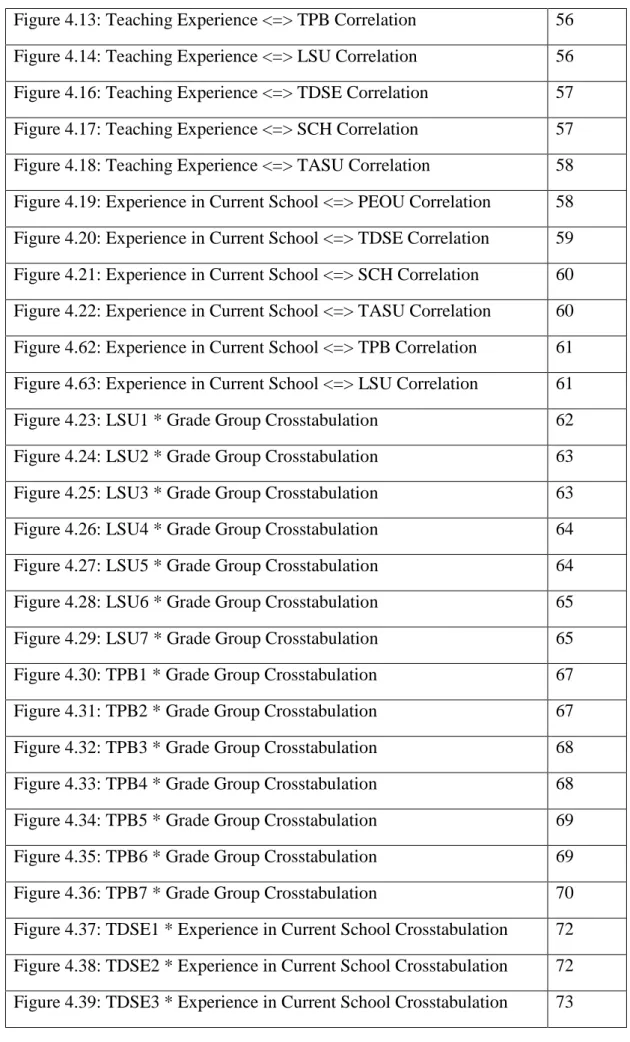
List of Tables
Glossary and Key Definitions
Hybrid learning/blended learning: Hybrid learning is a mix of online and offline learning where part of the online learning portion replaces traditional face-to-face instruction. The goal of hybrid learning is to use different techniques, whether online or offline, to provide effective education that meets the needs of the students.
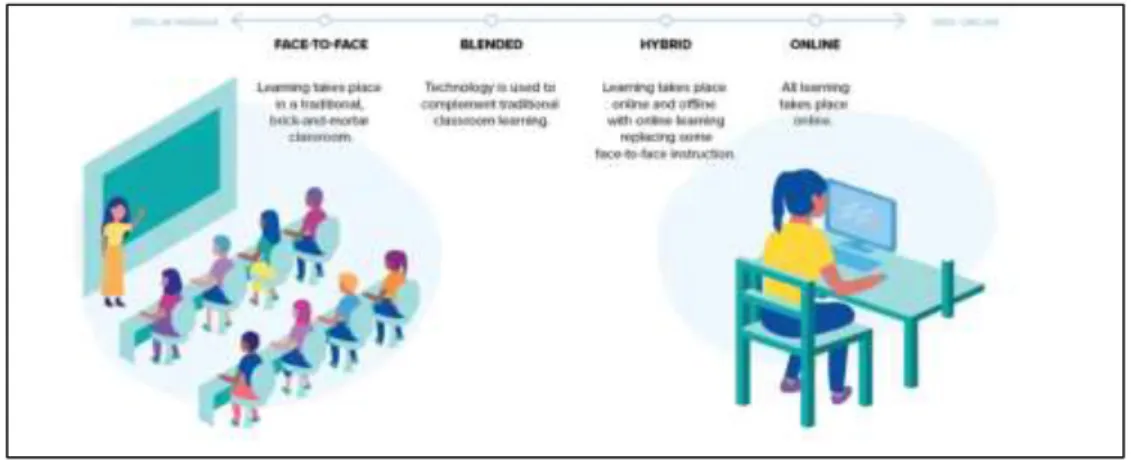
CHAPTER ONE: INTRODUCTION
Background Briefing of the Research
Research Problem and Objectives
The Research Main Questions
Case Study Setting
The school invested in technology infrastructure by adopting digital platforms and online resources, dedicating a technology department responsible for implementing and managing the new and adopted technology to support teachers and review implementation with SLT. The school's management is committed to providing quality teaching and setting up a dedicated team to develop school teaching in collaboration with the rest of the school's teachers.
CHAPTER TWO: LITERATURE REVIEW
- Introduction
- COVID-19 Crisis Management
- Overview of Crisis Management and Contingency planning
- COVID-19 Crisis Management in UAE
- Integration of Technology in Education
- Definition of Technology
- Briefing about Technology in Education
- Significance of Technology Integration in School Instruction
- Challenges and Limitation of Technology Integration
- Significance of Technology in Online Distance Learning
- Theoretical Framework
- Technology Acceptance Model (TAM)
- Behavioral Intention – Behavioral Use
- Perceived Ease of Use – Self-Efficacy
- Perceived Usefulness – Perceived Benefits
- External Variables or Constructs
- Conceptual Framework of the Research study
- Leadership Support
- Conclusion
This research uses Davis's (1989) theory of technology acceptance (TAM) as the basis of the theoretical framework. The self-efficacy is one of the important elements to consider when examining the adoption of technology in education (Paraskeva, et al., 2008).
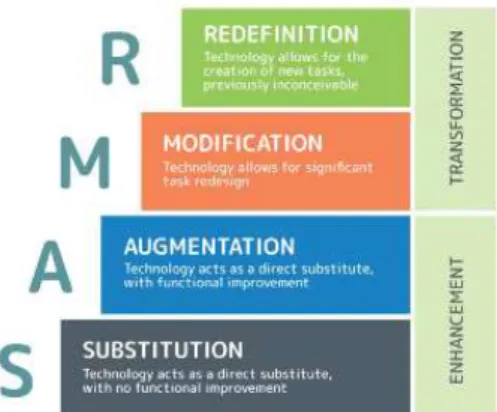
CHAPTER THREE: RESEARCH METHODOLOGY
Introduction
Research Approach
- Research Paradigm
- Research Design and Methods
The design of the research may need a quantitative, qualitative or mixed method (Johnson & Christensen, 2012). The research questions and objectives require qualitative investigation of the implementation and management of management in the case study and quantitative empirical validation in addition to the triangulation of both findings (Figure 3.2).

Research Purpose Statement
The importance of this phase is to gain a good understanding of the context and to help develop the tools of the quantitative phase2 study (Creswell, J.W., 2014). Phase 2 research is quantitative data collection to examine the teachers' responses to the factors of the different concepts that were developed from hypotheses derived from the theories and consolidated by the data collected in Phase 1.
Research Questions
How the technology infrastructure, digital platforms and online resources were used to provide accessibility to learning. What is the impact of the LSU, TASU, SCH, TDSE on the PEOU in online distance education.
Data Collection
- Data collection Techniques for Phase 1 study
- Site setting
- Interview Questionnaire Procedure
- Data Collection Phase 2 Study design
- Study Hypothesis and Proposed Model
- Sampling Design and Data Collection – Phase2 Study
- Measurement of Construct – Instrument
Participants should be able to answer questions about emergency planning and provide a clear overview of the digital platforms and online resources being used with their characteristics and purposes of use. On behalf of the researcher, a member of the school leadership team was appointed to send an email to the target teachers to invite him.
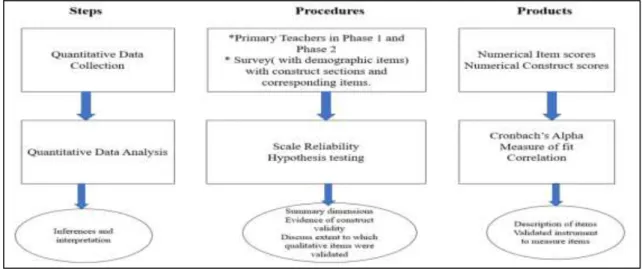
Research Credibility: Validity and Reliability
To ensure reliability of the research results, the errors of both researcher and participants must be minimized (Robson, 2002). The triangulation of the data analysis in the next chapter will provide more validity and reliability of the results.
Ethical Considerations
Regarding the qualitative data collected, validation was done through triangulation of data collection along with official artifact documents (inspection documents) and protocols prepared and sent to different parties of the school. In addition to resource triangulation, measures of constructs were developed based on the literature review and consolidated with qualitative data results from the phase 1 study (Creswell & Clark, 2007). Collected feedback was consolidated to update the instrument and establish content (face) validity.
The other types of validity constructs and criterion validity are discussed in the next chapter. Reliability supports the degree of consistency of the findings as a result of data collection techniques and procedures (Easterby-Smith et al., 2008). It can be measured using the Cronbach Alpha test for the quantitative data and is covered in the next chapter.
While the reliability and validity of Phase 1 data is established with the participation of more qualified personnel who have access to the required information. However, the participant has the right to withdraw from the study in case of any stress caused to any participant. Also, research ethics would take into account participants' well-being during the COVID-19 pandemic and school attendance restrictions, and understand the preference of answering a questionnaire and follow-up emails instead of a recorded structured or semi-structured interview for phase one data collection.
RESULTS, DATA ANALYSIS AND DISCUSSIONS
- Introduction
- Case Study Site Setting
- Qualitative Data Collection
In accordance with this, the school has established the "Easy Learning Section" and has recruited specialists and qualified teachers to meet the needs of these students. During the COVID-19 pandemic, the school faced two weeks of complete closure in March 2020 as all schools in the UAE were followed by a full period of full online distance learning. Then, at the beginning of the academic year, the school updated its emergency planning according to the KHDA regulation, including safety and attendance.
The school had to provide students with a choice of continuing online distance learning, continuous learning for students from Pre-K to Year 3, or hybrid learning for others.
Question 1.1.: How the technology infrastructure, digital platforms and online resources were used to provide accessibility to learning?
Question 1.2: How the school policies and protocols of using digital platforms and online resources were used to enhance the accessibility to learning and connectivity to
Question 1.3: How were the school policies and processes related to technology planning and implementation placed around teachers’ needs?
- Quantitative Data Collection
- Decoding and Computing New Variables
- Demographic Data Statistics
- Instrument and Measurement Model Analysis
- Inferential Data Analysis
- The Impact of LSU on TDSE
- The Impact of LSU on TASU
- The Impact of LSU, TDSE and TASU on PEOU
- The Impact of SCH, TDSE, PEOU, and TASU on TPB in Online Distance Learning
- The Correlation between the Demographic Variables and The Different Constructs
- Summary
However, the significance is at 0.264 (>0.05), which means that there is insufficient evidence to reject the null hypothesis that there is no relationship between the 2 variables for the population of the target groups in the school. However, the significance is at 0.174 (>0.05), which means that there is insufficient evidence to reject the null hypothesis that there is no relationship between the 2 variables for the population of the target groups in the school. However, the significance is at 0.066 (>0.05), which means that there is insufficient evidence to reject the null hypothesis that there is no relationship between the 2 variables for the population of the target groups in the school.
However, the significance is 0.135 (>0.05), which means that there is insufficient evidence to reject the null hypothesis, that there is no correlation between the 2 variables for the population of the target groups in the school. However, the significance is 0.302 (>0.05), which means that there is insufficient evidence to reject the null hypothesis, that there is no correlation between the 2 variables for the population of the target groups in the school. However, the significance is 0.116 (>0.05), which means that there is insufficient evidence to reject the null hypothesis, that there is no correlation between the 2 variables for the population of the target groups in the school.
However, the significance is 0.150 (>0.05), which means that there is insufficient evidence to reject the null hypothesis that there is no correlation between the two variables for the target population of the school. However, the significance is 0.051 (>0.05), which means that there is insufficient evidence to reject the null hypothesis that there is no correlation between the two variables for the school's target population. However, the significance is 0.057 (>0.05), which means that there is insufficient evidence to reject the null hypothesis that there is no correlation between the two variables for the school's target population.
However, the significance is of 0.123 (>0.05) which means that there is not enough evidence to reject the null hypothesis, that there is no correlation between the 2 variables for the population of the targeted groups in the school.
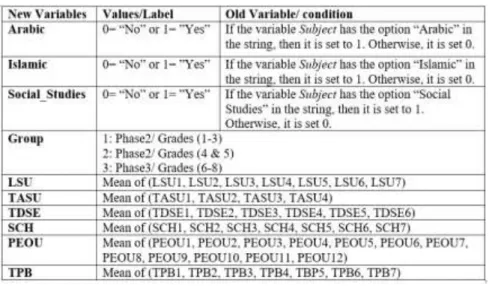
CONCLUSION AND RECOMMENDATION
- Key Finding and Discussion
- Limitation
- Conclusion and Recommendation
In addition, the survey reflected a generally positive perception among teachers about the benefits of the school's digital platforms and online resources in improving educational effectiveness in synchronous and asynchronous online distance learning and in improving student accessibility to learning and the connectivity to the learning community. However, there were significant differences of opinion in group3 and group2 on the effectiveness of the digital platforms in dealing with class sizes and different groups. This is in line with the leadership's challenge to maintain student grouping and the changes in the learning environment dynamically have a negative impact on teachers' perceptions of the usefulness of the digital platforms to deal with these changes.
Consequently, teachers need more support on the pedagogical use of the digital platforms, which in this case could be through modelling, video tutorials and enough time of practice. Some of the teachers are less proficient in English language, so the researcher had to translate the introduction about the study and the survey into Arabic language. This link will provide more support to teachers on the pedagogical use of the digital platforms and online resources.
To understand how the system characteristics of the digital platform and online resources serve to provide virtual learning environments that are suitable for online distance learning. Appendix B: This appendix contains the first section of the online survey that includes the introduction about the study and the instruments for the various constructs.
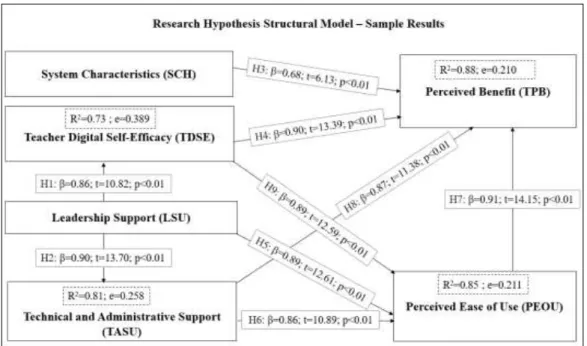
Perceived ease of Use
اصنملات
يفةسردملا
ملعت
نمازتملايه
ةلهسمادختسلاا
نماهللاخ
نمازتم
تاصنملاةيمقرلا
ةمدختسملايف
ةسردملا
للملعت
اهللاخ نم
ملعتل
ريغنمازتملا
نم
اهللاخ(
لملعتل
اهللاخ نم لقنتلاو
ملعتلنمازتملا
جامدإ
رداصمةيمقر
ةفلتخم(
رفوتتاصنملا
ةسردملال
نمازتم( ةفلتخم ةيمقر رداصم
ةسردملا ل
جامدإرداصم
ملعتلريغ
ةفلتخم
ملعتل ءاشنإ ةلوهس نمازتملا
ةيذغتلاب بلاطلا ديوزتو ةنمازتم نابجاو ةيروفلا ةعجارلا
ابجاوت
ةيروفلا ةعجارلا(
نمازتم)
ةسردملاملعتلل
يغ ر
ديدحتتابجاولا
دعوم
قحلااهميلستل
ريغ
ديدحت
اهمييقتو اهميلستل قحلا دعوم عم تابجاولا
ا يف لعافتلا يف ةلوهس نمازتملا ملعتلل ةسردمل
يبلاط عم(
صنملا رفوتتا
ةمدختسملا ةيمقرلا يف
ا عم لعافتلا ةلوهس نمازتملا ملعتلل ةسردمل
يبلاط
ةمدختسملا ةيمقرلا تاصنملاا يف
لل ةسردمل ملعت
يبلاط عم لعافتلا ةلوهس نمازتملا ريغ(
ريغ نمازتم
ةمدختسملا ةيمقرلا تاصنملا رفوت يف
ا ةلوهس نمازتملا ريغ ملعتلل ةسردمل
يبلاط عم لعافتلا
ةيمقرلاةمدختسملا
نمازتملالا
بلطتيريثكلا
نمازتم( ينهذلا دوهجملا
دقتعأنأ
ةيمقرلا
ينهذلا دوهجملا نم ريثكلا بلطتي
ةسردملاةطشنلأ
ملعتلاريغ
ينهذلا
مادختساتاصنملا
ةمدختسملا ةيمقرلايف
بلطتي
ريثكلانم
تاصنملاةمدختسملا ةيمقرلا
يف
ةسردملاعتلل
نمازتملا ملعم
ريفوتةيذغتلا
ةعجارلاةيروفلا
لابلطتي
ينهذلا(
ةيمقرلا تاصنملا مادختسا نأ دقتعأ تابجاو ءاشنلإ ةسردملل ةمدختسملا
تقوقحلا
ربعتاصنملا
نمازتملا ريغ ملعتلللا
دوهجملاينهذلا
ةيمقرلا ةصنملا مادختسا نأ دقتعأ عم تابجاو ديدحتل ةسردملل ةمدختسملا
Teacher’s perceived benefits of using the school’s
مسقلا4
نم ةوجرمل
ربع دراوملاو ةيمقرلا تاصنملا مادختسلا تنرتنلإا
تاصنملادراوملاو
ةيمقرلايف
نمازتملانم
يتيلاعفةيميلعتلا
يفملعتلا
نمازتم( تنرتنلاا ربع دعب
تاصنملا ززعت ةسردمللةيمقرلا دراوملاو
نع ملعتلا يف ةيميلعتلا يتيلاعف نم دعب
ةسردملانم
ةسردملل ةيمقرلا دراوملاو تاصنملا ززعت دعب نع ملعتلا يف ةيميلعتلا يتيلاعف نم
يننّكمتتاصنملا
ةسردملاصصحلل
ةنمازتملانم
لماعتلا
ةيلاعفبعم
لصفلا
نمازتم( تاعومجملا فلتخمو
نم ةسردملل ةيمقرلا تاصنملا يننّكمت لصفلا يف بلاط ددع يأ عم ةيلاعفب لماعتلا
لماعتلاةيلاعفب
عميأ
فلتخموتاعومجملا
يننكمتتاصنملا
نمازتم ريغ( .تاعومجملا فلتخمو لصفلا
ةيمقرلا دراوملاوا يف
ةسردمل نمازتملا ملعتلل
اعم نمازتملا ريغو نيسحت ىلع دعاسي ملعتلل بلاطلا ةلصاوم ةيناكمإ
نمازتم ريغو نمازتم(
تاصنملا مادختساةيمقرلا دراوملاو
اةسردمل
دعاسيىلع
ملعتللعاطقنا نود نم
تاصنملا مادختسادراوملاو
ةسردملا نمازتملا ملعتلل
اعم نمازتملا ريغودعاسي
ىلع نيسحت
دراوملاوةيمقرلا
ةسردملا ملعتلل
اعم نمازتملا ريغو نمازتملادعاسي
ىلع
ةيناكمإ نيسحتلصاوت
بلاطلا عم
عمتجم
ملعتلا-
بلاطلانيملعملاو
قرطبةفلتخم
ةيناكمإلصاوت
عمعمتجم
تلاعافتلا
قرطب
اعم نمازتملا ريغو نمازتملاي
حيت ءارجإ
تلاو تامييقتلا نم ةعونتم ةعومجم ةيذغ
ةعجارلا)نمازتم ريغو نمازتم(
ةعومجم ءارجإ
تلاو تامييقتلا نم ةعونتم ةعجارلا ةيذغ
Teachers’ digital Self-
تاصنملا مادختسا ىلع رداق يننأ دقتعأ ملعتلا ةئيب ريفوتل ةسردملل ةيمقرلادراوملاو
تاصنملا مادختسا ىلع يتردق نم قثاو انأ ملعتلا ةئيب ريفوتل ةسردملل ةيمقرلا دراوملاو
مادختسلا ةمزلالا تاراهملا تنقتأ دقل ريفوتل ةسردملل ةيمقرلادراوملاو تاصنملا
يتلا تنرتنلإا ربع لمعلا شرو ينتمعد دقل ةءافكلا ريوطت يف ةسردملا ةدايق قيرف اهريدي
يذلا تنرتنلإا ربع يدرفلا معدلا يندعاس نيسحت يف ةسردملا ةدايق قيرف همدق
اهمدق يتلا ةيميلعتلا ويديفلا عطاقم تمدق مادختسا لوح ديج لايلد ةسردملا ةدايق قيرف
تنرتنلإا
System Characteristics of the digital platforms and online
مسقلا :6
تنرتنلإا ربع دراوملاو
ةيمقرلا تاصنملا ىلإ لوصولا نكمي ةنمازتملا سوردلل ةسردملل
ةطساوب
ةفلتخم ليغشت ةمظنأو ةزهجأ(
لثم
كلذ ىلإ امو IOS)
ةيساسلأا ةيمقرلا ةصنملا ىلإ لوصولا نكمي ةنمازتملا ريغ سوردلل ةسردملل
شت ةمظنأو ةزهجأ ةطساوب ليغ
ىلإ امو IOS
كلذ)
ةسردملل ةيمقرلا تاصنملا ءادأ رثأتي لا ملعتلا ةئيب يف تاريغتلاب ةنمازتملا سوردلل
ملعتلا تائيب يف ريغتتلا
ربع دعب نع ملعتلا ىلإ هجول ا هجو نم نوكي سكعلا وأ تنرتنلإا
لالا ءادأ رثأتي
ةيمقرلا ةسردملل
ةنمازتملا ريغ سوردلل(
نيمدختسملا ددعو ملعتلا ةئيب يف تاريغتلاب
ملعتلا ىلإ هجول ا هجو نم ملعتلا تائيب ريغتت ( سكعلا وأ تنرتنلإا ربع دعب نع
سوردلل ةسردملل ةيمقرلا تاصنملا معدت ةنمازتملا
ةيبرعلا ةغللا
ريغ سوردلل ةسردملل ةيمقرلا ةصنملا معدت ةنمازتملا
ةفلتخم تاغل مادختسا
ةيبرعلا ةغللا كلذ يف امب
ةمدختسملا ةسردملل ةيمقرلا تاصنملل نكمي ةنمازتملا سوردلل
تنرتنلإا ربع دراوملا نم ةفلتخم(
عطاقم
تادنتسمو ويديفلا امو تيوصتلاو HTML
كلذ ىلإ )
ملعتلا ةئيب نع رظنلا ضغب(
ريغتت
Technical and
قيرف نم يدرف معد ىلع لوصحلا يننكمي ، ايجولونكتلا قيرف ءاربخ نم صصختم
ةلجسملا ويديفلا سورد نم ملعتلا يننكمي ينفلا معدلا ميدقتل اهيلإ لوصولا نكمي يتلا
ةيفاضلإا تازيملا نم ةدافتسلاا يننكمي نم ةسردملل ةيمقرلا دراوملاو تاصنملل
للاخ نم ءلامزلا عم ةشقانملا يننكمي تنرتنلإا ربع تايدتنملا وأ تاعومجملا
كشب ةدافتسلااو تاصنملا تازيم نم لضفأ ل
ةسردملل ةيساسلأا ةيمقرلا دراوملاو دراوملاو
I believe that using the digital platforms and online resources does not require much of my mental effort. The digital platform and online resources allow me to effectively handle any class size and different grouping. TDSE1- I am confident about my ability to use the digital platform and online resources to provide online distance learning.
I feel that I know how to use digital platform and online resources to deliver online distance learning. I have mastered the skills needed to use a digital platform and online resources to provide an online learning environment. Changes in the learning environment and the number of users do not affect the functioning of the digital platform and online resources.
The digital platform and online resources support the use of various languages including Arabic. The digital platform and online resources can be easily integrated regardless of the learning environment and.
